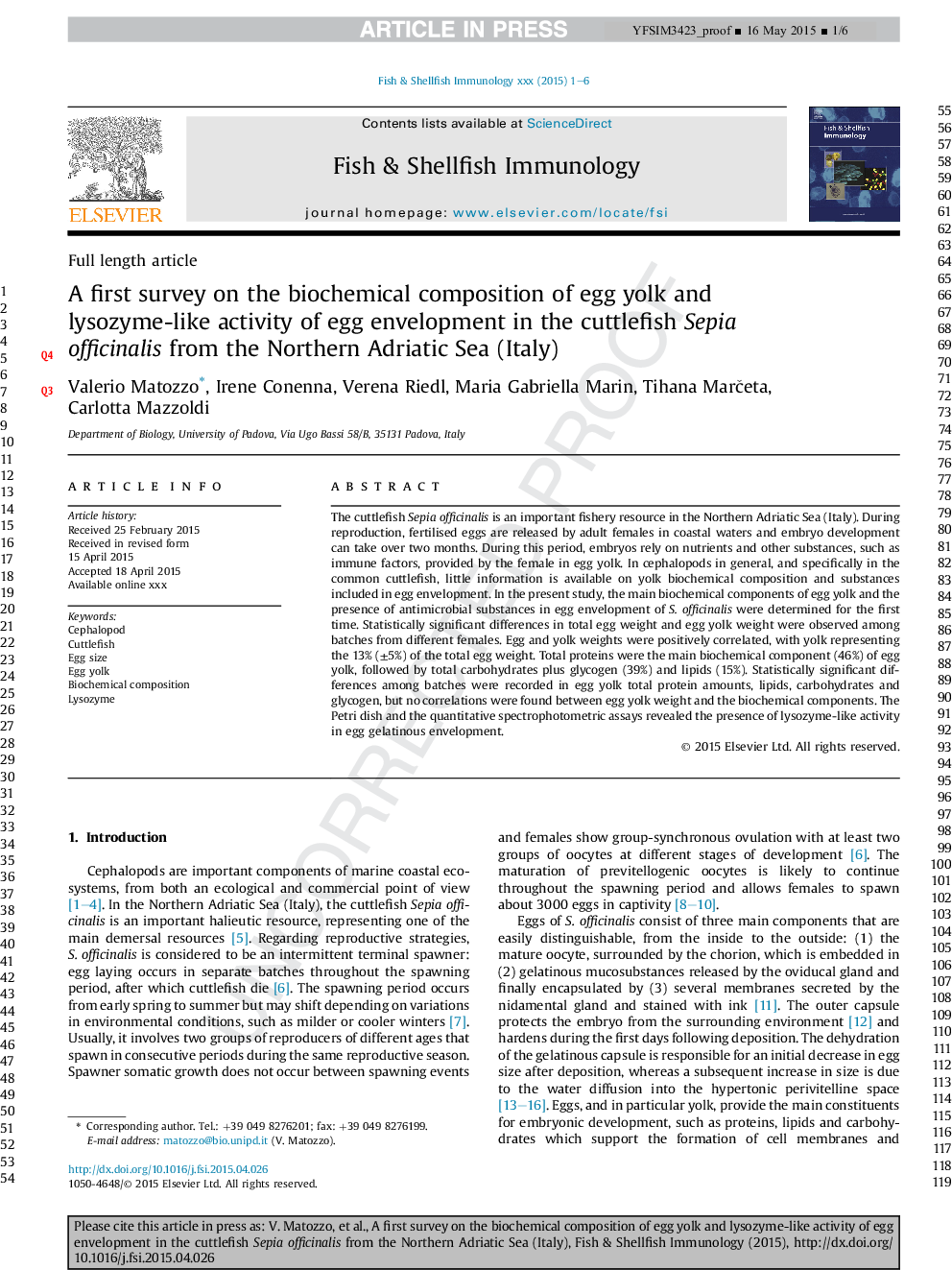| Article ID | Journal | Published Year | Pages | File Type |
|---|---|---|---|---|
| 10971829 | Fish & Shellfish Immunology | 2015 | 6 Pages |
Abstract
The cuttlefish Sepia officinalis is an important fishery resource in the Northern Adriatic Sea (Italy). During reproduction, fertilised eggs are released by adult females in coastal waters and embryo development can take over two months. During this period, embryos rely on nutrients and other substances, such as immune factors, provided by the female in egg yolk. In cephalopods in general, and specifically in the common cuttlefish, little information is available on yolk biochemical composition and substances included in egg envelopment. In the present study, the main biochemical components of egg yolk and the presence of antimicrobial substances in egg envelopment of S. officinalis were determined for the first time. Statistically significant differences in total egg weight and egg yolk weight were observed among batches from different females. Egg and yolk weights were positively correlated, with yolk representing the 13% (±5%) of the total egg weight. Total proteins were the main biochemical component (46%) of egg yolk, followed by total carbohydrates plus glycogen (39%) and lipids (15%). Statistically significant differences among batches were recorded in egg yolk total protein amounts, lipids, carbohydrates and glycogen, but no correlations were found between egg yolk weight and the biochemical components. The Petri dish and the quantitative spectrophotometric assays revealed the presence of lysozyme-like activity in egg gelatinous envelopment.
Related Topics
Life Sciences
Agricultural and Biological Sciences
Aquatic Science
Authors
Valerio Matozzo, Irene Conenna, Verena Maria Riedl, Maria Gabriella Marin, Tihana MarÄeta, Carlotta Mazzoldi,
